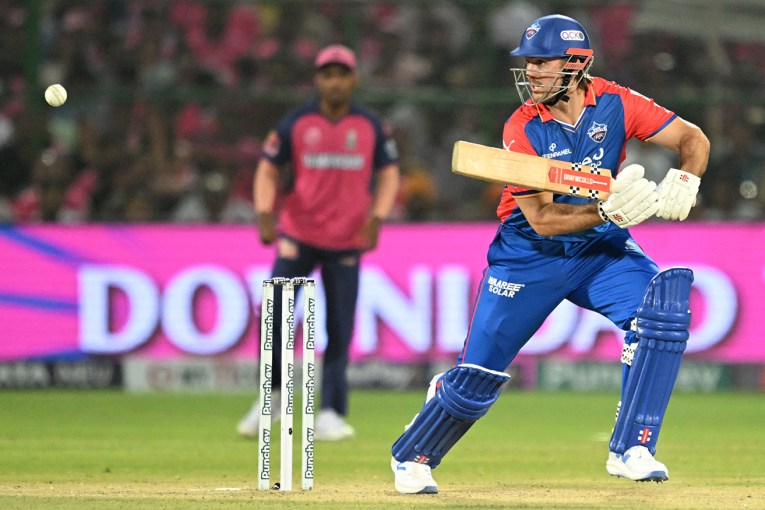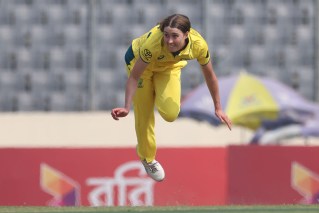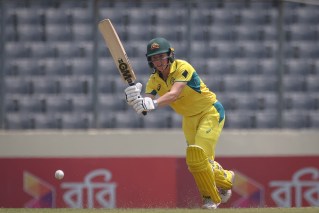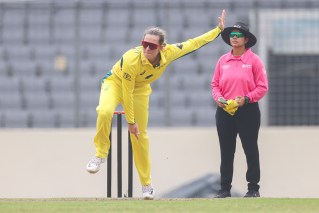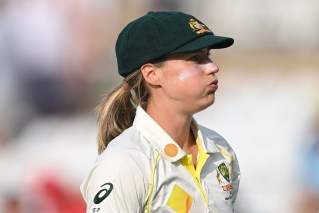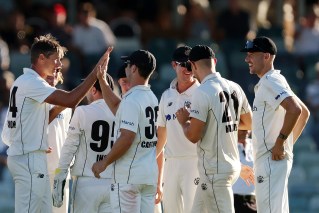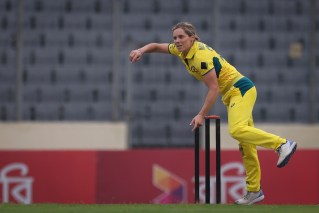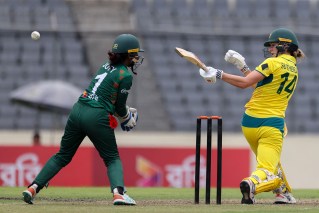‘Warnie’ was so much more than the man we all thought we knew

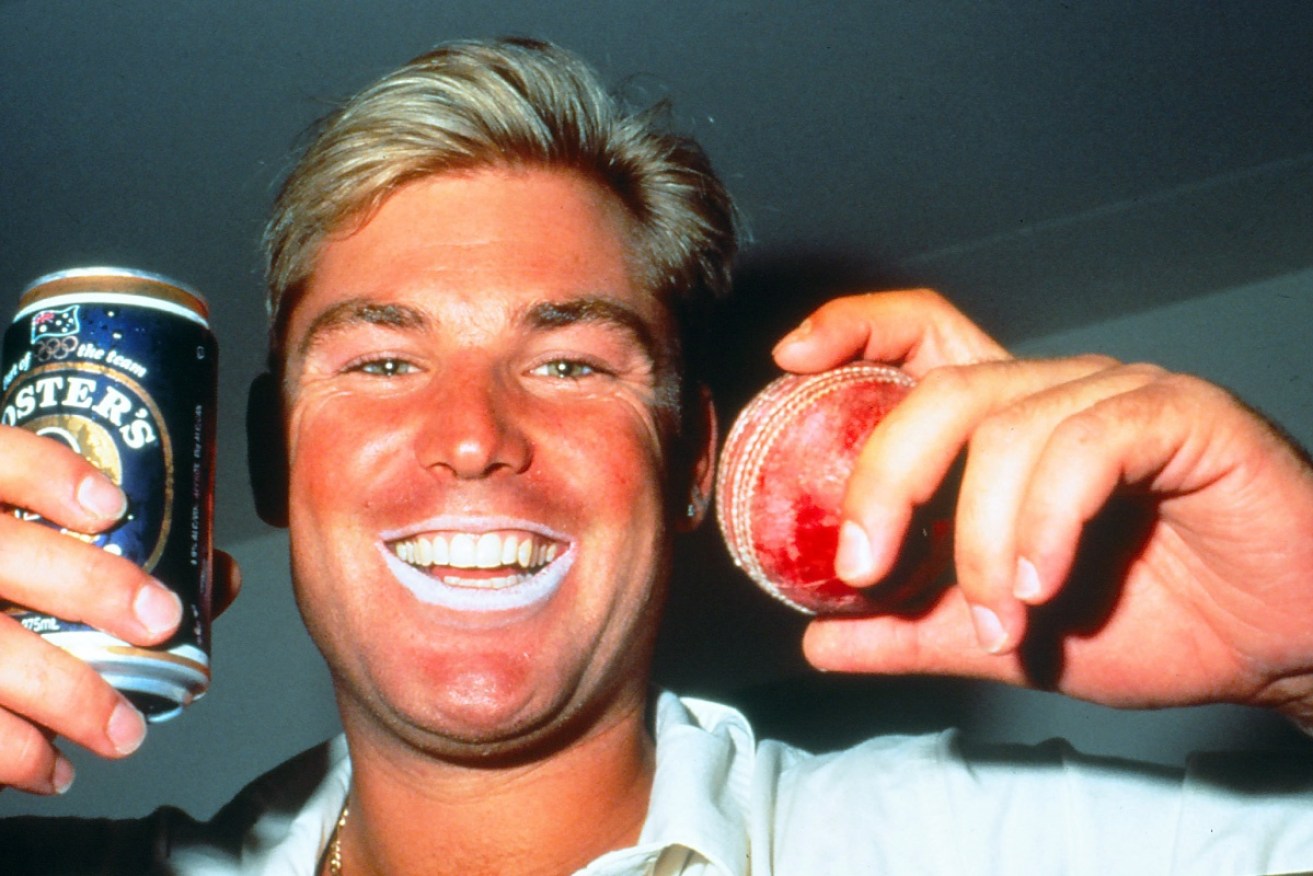
Shane Warne sports that cheeky trademark smile after wreaking havoc on the pitch in 1993. Photo: Getty
The all-enveloping tragedy of an early death aside, let’s start with that one ball in the northern hemisphere, almost 29 years ago now. Really, we have to.
His first Ashes Test delivery, as we all know now, the English bulldog Mike Gatting at the crease.
Manchester’s Old Trafford in June 1993 was a relic of old cricket, of old sport – a mishmash of decay and nostalgia, an architectural jumble yet perfect in its own way.
The weather then was typical Manchester. An early summer’s day, a deep green outfield and smothering dank grey the backdrop. There is no hint of sun but Warnie has a broad dash of white suncream smirched across his nose and dabbed onto his lips for extra gloss. His hair is full and near peroxide blond and a thick gold chain bestrides his open necked shirt.
Already he is one of the team yet already he stands apart.
One ball in and already he is no longer a player but a star.
“It really was a fluke but I think it was meant to be,” he said in 2017. And as ever he was right.
Gatting, a seriously accomplished fighter of spin, was powerless to act as the ball dropped well wide of leg stump before deviating sharply across the crease to nick the top of the off stump.
“I’m not sure when we often spoke about it that he expected it to spin that much. He said he tried to get it down the other end as best he could,” Gatting recalls.
The priceless face belongs to the Englishman not the newcomer. He can’t believe what he has just seen and neither could the rest of us.
Somehow, it gets better with repeated viewing. Australia’s captain Allan Border says he didn’t appreciate just how good it was until later, when keeper Ian Healy wouldn’t stop raving about it. And we all have, ever since.
Like all such defining moments it has become more than the sum of its parts. There were lions of the game in the Test series of 1993 – the Waughs, Mark Taylor, Graham Gooch and Mike Atherton – but cricket was on the cusp of great change. And Shane Warne drove that in great part.
We have talked these past 36 hours of another larrikin, Rod Marsh, after his death early on Friday and it is beyond tortuous to now find ourselves lamenting another of this ilk.
Warnie – and he was always Warnie – took the likeable, irreverent rogue figure to another level. We didn’t know him personally but we always felt that we did and that was enough always.

Warne took the likeable, irreverent rogue figure to another level. Photo: Getty
Gideon Haigh, the doyen of cricket writers anywhere, remembers meeting Warnie in Melbourne’s Brighton 12 months after his ball of the century.
Warne was about to buy the beers when he discovered Haigh didn’t drink and so bought softies instead before stepping outside to bond over a mutual love of smoking.
“Was I what you expected?” he asked Haigh two hours later. People, said Warne, invariably felt they knew all about him when patently they couldn’t possibly.
Haigh invokes the TV presenter Jana Wendt who, in 2006, said “it was uncommonly easy to like him (Warne) and a little harder to explain why.”
Time aids us greatly here.
Warnie stopped playing Test cricket in 2007 and never stood still after, growing as a force and personality and as a public face of Australia.

Warne proved as astute a commentator as he had been on the pitch. Photo: Getty
Arguably we underrate him here as a sportsman and a world figure. Australia’s most famous person? Very probably. Australia’s greatest sports person? A toughie clearly, but it would take the highly officious and bloody-minded to say otherwise with consummate conviction.
There is the Bradman comparison. Sir Don we know as imperious, world famous, but of another world. He lived quietly in Adelaide’s inner, rose-lined suburbs for years post-playing yet held huge sway in cricket’s national administration.
Warnie chose other routes. There was a divorce from the mother of his three children, the sexting, the hair transplants, the drinking, the smoking, the poor diet, the charity work for underprivileged children, the laddism that enveloped much of the ‘90s, the Liz Hurley engagement and a man as familiar on the cover of Hello magazine as on the daily back pages.
Neither saint nor devil
It seems almost anachronous now to revere him for such traits but we can do so because, while no saint, Warnie was not a man of malice. The daggers, by and large, are simply not there.
He was admired enormously abroad – ironically, perhaps, more so in England at times than in Australia. His off-field lifestyle was just that over there. They saw him more for who he was, any errant behaviour was just that, whereas domestically it counted against him when it came to the Establishment. He never became, remember, Australia’s Test captain.
Hindsight conjures a monumental lapse here. Take fellow sporting genius John McEnroe, a player who turned tennis on its head as a player and then, surprisingly to those of us who felt his talent came from innate feel only, turned out to be a thinker of quite stunning depth and originality.
Warnie matched Mac. As a TV commentator and analyst he almost surpassed his playing accomplishments. Not only did he nearly always get what was about to happen on the pitch, he was able to convey this simply and directly to his audience.
it was as if he proffered a Road to Damascus revelation in every other sentence. Only a sportsman of sheer brilliance of thought can do this.
He had an aura about him, of course, always had done since ’93, probably earlier for those who knew him before.
I watched him in the media room at last December’s Adelaide Test. All the greats were there as usual. There is an oblique pecking order in these things. Near the food and coffee counter sat Merv Hughes, jovial and, as an aside, ensuring every cricketer present said hello to a young boy in a wheelchair who was with him.
Others came and went, Ian Botham, Ian Chappell, Brett Lee and then, very briefly, Warnie. He was suited and booted and walked briskly between TV booths. Unlike the rest he didn’t seem to have a moment to linger, he was in demand everywhere and it’s not teary-eyed to suggest that he stood apart. He looked fit and, it must be said, cosmetically boosted, but he looked well.
Larger than life
His death at just 52 is terrible for his family and friends first, naturally. And then for cricket and then for Australia.
It is pop-culture crass to suggest that this is Australia’s Princess Diana or John F. Kennedy moment but it may well turn out to be so. He was that big.
When the cricket bible Wisden named its five top cricketers of the 20th century, Warnie came in at fourth slot. The Don was top but our leg-spinner was just half way though his career. Almost all of us today were not around when Bradman was in his pomp, so direct comparisons can’t work. But for impact on modern Australia it is impossible to argue against Warne. Surpassing Sir Don for cricket genius and influence? Impossible to answer. But on a par? Well, yes.
As with Bradman, Warne reinvented cricket and its connection to its public. He brought leg spin from the periphery of the sport to front and centre. When it works, leg spin is a sublime art, mystical, enthralling and with the touch of the devil, to be feared yet admired in equal part.

There was sunshine in Warne’s soul, a larrikin’s joy in life and all it has to offer. Photo: Getty
A personal indulgence. In the northern summer of 1983 I attended the England versus Pakistan World Cup match at Lord’s. Callow youths, we bought beers and stood by the Tavern Stand pressed up hard against the pitch.
When he wasn’t bowling, the Pakistan leg spinner Abdul Qadir was unfortunately dispatched to field in front of us. His welcome was anything but warm, an ongoing and vitriolic venom directed at him by many in front of us. It was as appalling then as in hindsight.
As much as anything, though, it was fear of the unknown, of the brilliance and threat of the opposition that drew the rabid, unseemly response.
Shane Warne, a generation later, also brought out that fear, but with that, thankfully, came respect and open admiration, deep admiration. Goodness knows how he coped with the largely self-inflicted tabloid intrusion in his life, but he did so wonderfully.
It is a sad irony only that he died on a lad’s holiday in Thailand. It was part of his persona, but a small part only. Warnie, as we all know even though we didn’t know him, was so, so much more than that.
He will be missed by all Australians and by many more beyond these shores. And for a long, long time.
